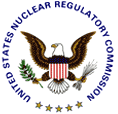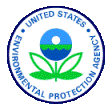Biological Safety Officer: Dan Widzowski (Biology Department)
Chemical Safety Officer: Justin Fair (Madia Department of Chemistry, Biochemistry, and Physics)
Radiation Safety Officer: Lara Homsey-Messer (Anthropology, Geospatial and Earth Sciences Department)
The Occupational Safety and Health Administration (OSHA) published the Hazard Communication Standard on November 25, 1983. This regulation applies to certain manufacturers and, in part, to select laboratories. OSHA received many comments regarding whether the procedures of the Hazardous Communication standard applies to laboratories where the staff is usually highly educated. OSHA indicated that although "31.9 percent of all laboratory workers have bachelors degrees, 20.6 percent have master's degrees and 20.9 percent have doctorates," nevertheless "there is some question as to whether laboratory workers actually make themselves knowledgeable as they should be, and some laboratory employees are not professionally trained." 51FR2664 (Federal Regulation)
Other unique differences for laboratories were noted, including: the small amount of chemicals used; the vast numbers of different chemicals involved; and that nearly half of the laboratories in one survey could not accurately predict their chemical needs one month in advance. OSHA indicated, "Despite the existence of the unique characteristics of laboratory work places, in actual practice incidents of acute adverse health effects resulting from exposures to toxic substances in the laboratories do occur. Furthermore, some studies have shown increased risks of certain diseases for laboratory workers. In addition, although laboratory workers are, in general, a well educated work force, there is evidence that many laboratories do not have health and safety programs." Therefore, OSHA proposed the Occupational Exposures to Hazardous Chemicals in Laboratories regulation from which the Chemical Hygiene Plan originates. The Occupational Safety and Health Administration published the final rule of the laboratory standard titled "Occupational Exposures to Hazardous Chemicals in Laboratories" in the January 31, 1990, Federal Register. This was published as an amendment to 29CFR1910, Subpart 2, identified as section 29CFR1910.1450. The title of that amendment is "Occupational Exposure to Hazardous Chemicals in the Laboratory," but it is better known as the "Laboratory Standard." The effective date of the standard was May 1, 1990. A part of the standard is the requirement for the development of a chemical hygiene plan. That plan was to be developed and implemented by January 31, 1991.
Primarily, the protection of health and the safety of students, faculty, and staff is a moral obligation. As indicated above, an expanding array of federal, state, and local laws and regulations makes it a legal requirement and economic necessity as well. Laboratory safety can be achieved only by the exercise of appropriate judgment by informed, responsible individuals. An essential part of the development of scientists is that they learn to work with and accept the responsibility for the appropriate use of hazardous substances. Liability for an unfortunate laboratory event (accident, illness, environmental damage) may ultimately rest with the individual (student, faculty member), their immediate supervisors (department head), other officers of the institution (dean, etc.), or the institution itself, depending on the circumstances and applicable laws.
An important objective of this plan is to provide assistance and guidance to all laboratory workers who use chemicals so they can perform their work safely. Experience has demonstrated, especially in industry, where the laboratory can be a safe workplace. This record, however, has been achieved only through vigorous safety programs. The goals of a laboratory safety plan should be to protect from injury those working in the laboratory, others who may be exposed to hazards from the laboratory, and the environment. Each individual working in a laboratory should be informed about safety in connection with that particular laboratory and the work going on there. This includes all research staff, faculty members, technicians, teaching assistants, research assistants, and students.
The stockroom personnel, maintenance personnel, technical assistants, animal care personnel, persons transporting chemicals, and others in the vicinity of the laboratory may also be exposed to physical and chemical hazards in connection with work in progress. They should be informed about the risks involved and educated about how to avoid hazards and the procedures to follow in the event of an accident. They should also be provided with appropriate protective materials.
Chemicals must be disposed of in such a way that people, other living organisms, and the environment generally are subjected to zero harm by the substances used or produced in the laboratory. Both the laboratory workers and the support personnel should know and use acceptable disposal methods for various chemicals, reagents, etc.


